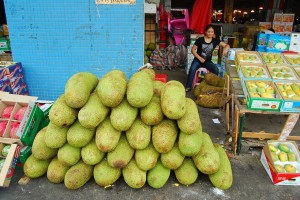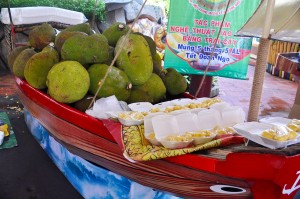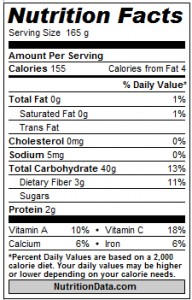![]() Commonly mistaken as a relative of the durian, the delicious jackfruit actually belongs to the mulberry family. It is widely grown in the tropical lowlands for food consumption but can also be used for timber, fuel and fodder, medicine, and industrial products. It is known to be the largest tree-borne fruit in the world, typically growing 30-90 cm in length and we
Commonly mistaken as a relative of the durian, the delicious jackfruit actually belongs to the mulberry family. It is widely grown in the tropical lowlands for food consumption but can also be used for timber, fuel and fodder, medicine, and industrial products. It is known to be the largest tree-borne fruit in the world, typically growing 30-90 cm in length and we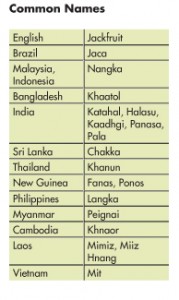 ighing 4.5-40kg when fully mature. Its succulent flesh is naturally sweet and has a subtle aroma.
ighing 4.5-40kg when fully mature. Its succulent flesh is naturally sweet and has a subtle aroma.
Jackfruit (Artocarpus heterophyllus) is native to the rainforests of Malaysia and the Western Ghats of India. It has naturalized in many parts of the tropics, and is an important crop South and Southeast Asia. It is also grown in parts of Africa, South America, the Caribbean, Central America, the Pacific Islands, and North Australia.
Plant Description
Jackfruit is a medium-size evergreen tree typically reaching 8–25m in height with a trunk diameter of 80-200 cm. The tree casts a very dense shade and can have numerous side branches that begin near the ground.
Leaves of the plant grow up to 16 cm long, which are glossy dark green from above and pale green underneath. All parts of the tree release sticky white latex when damaged.
Jackfruit is monoecious, with both male and female inflorescences (flower clusters) on the same tree. Male inflorescences grow on younger branches are dense, cylindrical-shaped, and up to 10cm in length. Female flowers are larger and elliptical in shape. A high percentage of c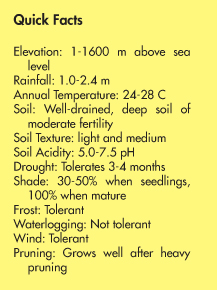 ross-pollination occurs from insects and wind. The flowers are reportedly pollinated by insects and wind, with a high percentage of cross-pollination.
ross-pollination occurs from insects and wind. The flowers are reportedly pollinated by insects and wind, with a high percentage of cross-pollination.
Fruit Description
The inflorescences form a compound fruit or syncarp that is oblong in shape, 30-90 cm in length, and weighs 4.5–30 kg. Because of its weight, fruit grows on the trunk and the tick part of main branches. The fruit is covered by a green to yellow-brown outer rind. Inside is a series of hexagonal, cone-like apices attached by central core and covered by a thick, rubbery, yellow-white wall. The immature fruit contains a lot of thick, white sap. When ripe, the flesh is sweet and a little acidic, with a hint of banana flavor.
Covered by the flesh and a membrane, the brown rounded seed are typically 2-3 cm long and 1-1.5 cm in diameter. A fruit can contain up to 500 seeds.
Varieties
Commercial varieties are can be classified according to the thickness of its pulp. Varieties with a thin pulp tend to be sweeter, more fibrous, and more aromatic. Those with thick flesh are firmer, crisp, and less fragrant. Common varieties are Black Gold, Cheena, Cochin, Dang Rasimi, Golden Nugget, Golden Pillow, J-31, J-33, NS1, and Tabouey. Other varieties include Safeda, Khaja, Bhusila, Bhadaiyan, Handia, Velipala, Mammoth, and Everbearer.
Propagation
For commercial production, grafted plants are preferred to ensure uniform high quality. seedlings. Seedlings for rootstocks develop very quickly, reaching 25 cm in in 3-4 months before being grafted with the desired variety. Vegetative production using cuttings or air-layering is also possible but is rarely practiced.
Pests and Diseases
For more plant health information, including diagnostic resources, best-practice pest management advice and plant clinic data analysis for targeted crop protection, visit CABI’s Plantwise Knowledge Bank.
In Asia, boring insects are the major pests of jackfruit. These include Indarbela tetraonis, Batocera rufomaculata, Margaronia caecalis, and Ochyromera artocarpio. Other pests are mealybugs (Nipaecoccus viridis, Pseudococcus corymbatus, and Ferrisia virgata), spittle bugs (Cosmoscarta relata), longicorn beetles (Aprona germarri, Pterolophia discalis, Xe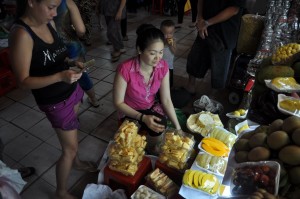 nolea tomenlosa asiatica, and Olenecamptus bilobus), catterpillars of Diaphania caesalis, Perina nuda and Diaphania bivitralis), aphids (Greenidea artocarpi and Toxoptera aurantii), and thrips (Pseudodendrothrips dwivarna) are minor problems.
nolea tomenlosa asiatica, and Olenecamptus bilobus), catterpillars of Diaphania caesalis, Perina nuda and Diaphania bivitralis), aphids (Greenidea artocarpi and Toxoptera aurantii), and thrips (Pseudodendrothrips dwivarna) are minor problems.
The most common disease of jackfruit is fruit rot caused by Rhizopus artocarpi. Rotten premature fruits fall from the tree, resulting to lower yields.
Other diseases include pink disease; stem, fruit, and male inflorescence rot caused by Rhizopus artocarpi; and leafspot due to fungi.
Harvesting
The best fruit quality is attained by harvesting the fruit when it is fully mature, then allowing it to ripen (3-7 days) in storage.
Fruits can take 3-8 months to mature, which makes time a bad gauge for maturity. The best indicators for maturity are the change of skin color from light green to a slight yellow or brown, flattening of the skin spikes, yellowing of the leaf nearest to the fruit, and a hollow sound when tapped. Harvesting can be done between mid-morning and late afternoon to reduce latex flow.
Market
The immense size and weight of the jackfruit makes it cumbersome to transport. To avoid over-ripening, mature fruits should be harvested before they ripen. Post-processing can be done to add value and extend the shelf life.
Retail markets in Southeast Asia sell commonly sell ripe minimally processed jackfruit for fresh eating and unripe ones for cooking. The flesh is carefully removed and packed.
Food Value
The fibrous fruit is composed of mono-, di-, and plosaccharides. It is also a good source of pectin and protein. A detailed list of nutrition facts is shown above, from www.nutritiondata.com.
The ripe fruit is usually eaten fresh but can be processed to jam, jelly, and chutney. The dried fruit can be made into high-quality candies. Freeze-dried jackfruit are also sold in a high price. The pulp is used for flavoring.
The unripe mature fruit is often cooked with coconut milk and curry. The leaves and flowers are also cooked as vegetables. The seeds are boiled or roasted and eaten as snack.
Other Uses
The tree is report to have medicinal properties. The seeds are said to relieve biliousness and when roasted, is an aphrodisiac. The ash of jackfruit leaves, when combined with coconut oil, is said to heal ulcers. The latex aids in healing of abscesses, snakebite and glandular swellings. The root remedies skin diseases and asthma, while its extract is used for fever and diarrhea. The bark is made into poultices, while wood is a sedative property and is said to induce abortion.
Other uses include:
Leaves: animal fodder, food wrapper, & woven plates
Wood: fuel, timber, and crafts
Bark: ropes & tannin
Latex: glue, bird and insect traps, & chewing gum
References
Main Reference:
Elevitch, C.R. & Manner, H.I. “Artocarpus heterophyllus (jackfruit).” Species Profiles for Pacific Island Agroforestry. April 2006. <www.traditionaltree.org>
Acedo Jr., A.L. (1992). Jackfruit Biology, Production, Use, and Philippine Research. Monograph Number 1. Forestry/ Fuelwood Research and Development (F/FRED) Project, Arlington, Virginia
Crane, J.H., C.F. Balerdi, and R.J. Campbell. (2002). The Jackfruit (Artocarpus heterophyllus Lam.) in Florida. Fact Sheet HS-882. Horticultural Sciences Department, Florida Cooperative Extension Service, Institute of Food and Agricultural Sciences, University of Florida, Gainesville. <http://edis.ifas.ufl.edu/BODY_MG370>.
Gunjate, R.T., Kokekar, D.T. and Salvi, M.J. (1982). Proc. Nat. Sem. On Pl. Propagation, Culcautta
Morton, J. 1987. “Jackfruit” In: Fruits of warm climates. Julia F. Morton: Miami, FL. Ret <Retrieved from www.hort.purdue.edu/newcrop/morton/jackfruit_ars.html on 15 August 2012>
Nutritiondata, “Jackfruit, raw.” <Retrieved from http://nutritiondata.self.com/facts/fruits-and-fruit-juices/1930/2 on 16 August 2012>
SCUC (2006). Jackfruit (Artocarpus heterophyllus), Field Manual for Extension Workers and Farmers, SCUC, Southampton, UK

